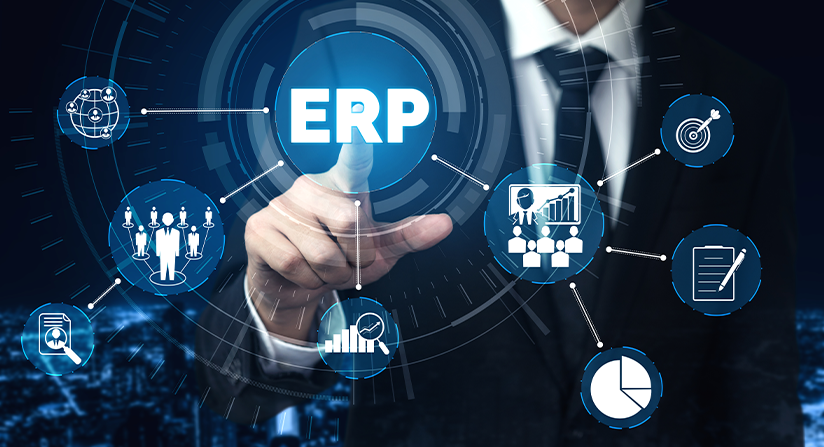Supply chains have been disrupted for over two years now, beginning with the pandemic and, most recently, international conflicts. Having supplies delayed can wreak havoc on manufacturers, resulting in slowed production, delayed shipments, and unhappy customers. Without a way to proactively mitigate supply chain issues, manufacturers risk losing their customers and having a serious effect on their business.
Growing manufacturers often use spreadsheets for managing their supply chain operations, but as their business expands, this method becomes cumbersome. Departments can’t easily collaborate with each other on supply chain logistics. Spreadsheets aren’t an efficient method to manage the complexities and rapid changes in supply chains that expanding companies face.
How ERP helps manufacturers improve supply chain management
As a business grows, so does its data. It becomes more difficult to keep track of, and effectively use, larger volumes of supply chain data with spreadsheets. With an ERP system, the data can be analyzed and the supply chain process optimized so businesses can get the supplies needed to deliver their own products on-time.
How does an ERP system help with supply chain improvement? Below are the key benefits an ERP system provides to help manufacturers improve their supply chains.
Enhanced visibility – With ERP, everything regarding your supply chain is consolidated into one system. You get connected with suppliers and have insight into every part of the supply chain. This connectivity allows you to stay on top of what is happening at all times and quickly identify any potential issues to address them before they cause problems.
When you are working with spreadsheets, you can’t achieve real-time visibility of what is happening in your supply chain. ERP provides cross-channel inventory visibility so you can know immediately how much you have of any type of product. You can also see inventory at locations in other countries and work with suppliers across the globe to broaden your options for material purchases.
Greater collaboration – As your business grows, so do the number of employees and the people who need to provide input into supply chain needs. As more products get produced and more channels get added, you need greater coordination throughout your organization. Trying to maintain control using spreadsheets and emails is error-prone and isn’t viable for an expanding company to overcome supply chain disruptions.
With ERP, you can easily collaborate with vendors. Suppliers can better understand your needs and work with you to support them. It can notify suppliers when inventory should be replenished and it allows for communication with vendors through the ERP system for greater efficiency. You can also track supplier performance with real-time analytics and dashboards.
Better forecasting – Due to their manual nature, spreadsheets are not conducive to forecasting supply needs. ERP takes the supply chain data it receives and uses algorithms and consumption analysis to plan for demand. It allows you to review sales forecasts and current supply levels in order to predict what will be needed down the line. Reports are produced with real-time data insights, showing what supplies are necessary to meet upcoming demand.
Increased agility – With ERP, processes get streamlined, automation eliminates errors, greater efficiency reduces costs, and access to more data allows for a better understanding of what is happening in the supply chain. These factors, as well as increased supply chain transparency, helps businesses to successfully tackle supply chain challenges. The system also lets procurement know when inventory gets low so they can order additional supplies.
Ensure compliance – Businesses often rely on getting supplies from other countries. As a result, careful observance of government tariffs, trade agreements, and procurement rules is essential. An ERP system helps manage those international challenges to ensure compliance. And, greater visibility into the supply chain through ERP allows you to monitor and manage variables such as the weather, exchange rates, political/social unrest, and delayed shipments.
Improved customer satisfaction – When you can get the supplies needed to manufacture products to fulfill demand, you help keep customer satisfaction levels high. Using ERP with supply chain management gets the materials you need on time. When you can get products manufactured and into customers’ hands when they want them, you are more likely to retain customers, receive referrals, and elevate your brand.
Conclusion
ERP is essential for growing businesses to improve supply chain operations. With all the challenges faced in recent years, manufacturers more than ever need tools that can help them handle supply chain disruptions.
As a business expands, it has to move beyond the old ways of doing things and find solutions that allow fast response to change. ERP provides manufacturers with the visibility, connectivity, insight, and agility to improve their supply chain management and keep production on schedule.
Follow Us






